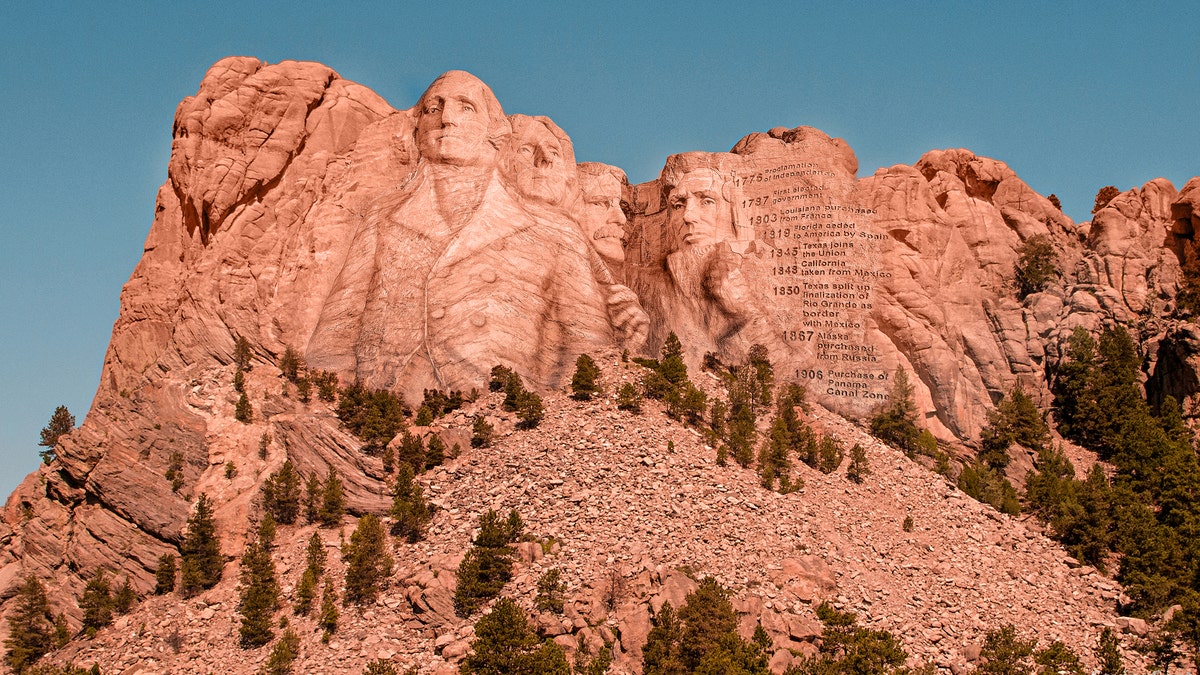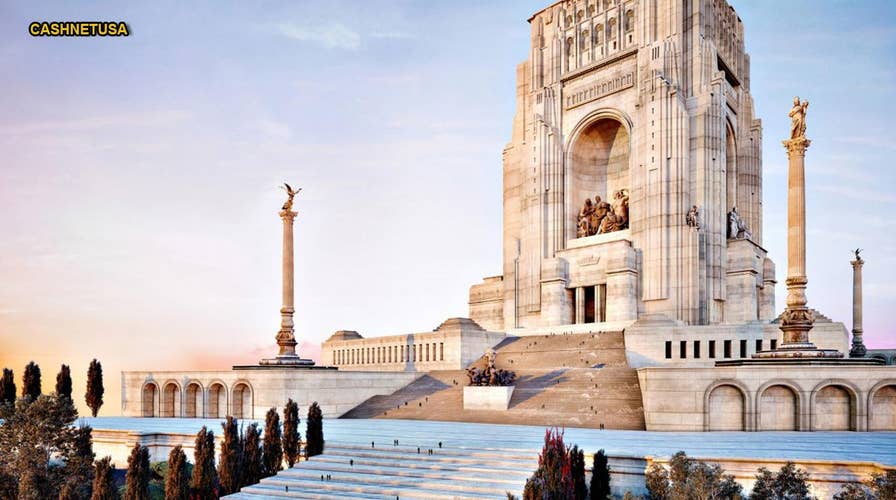AMAZING PICS: Renderings show America's mega-monuments that were never built
America is home to many of the world's best-known monuments, such as Mount Rushmore and the Statue of Liberty. However, there are a number of monumental structures that were planned and designed but, for one reason of another, they never came to fruition. Here's a look at what some of the U.S. monuments that were never built would have looked like.
From the Statue of Liberty to the Lincoln Memorial, America is home to many of the world’s best-known monuments. But a host of other incredible monumental structures were designed but never built – here’s a glimpse into the U.S. monuments that could have been.
CashNetUSA commissioned NeoMam Studios to create digital renderings of what the monuments would have looked like. “We used lost plans and schematics to bring these unbuilt structures to life,” explained NeoMam Studios, in a statement. “With this project, we aim to teach readers about the history of monuments they know and love, as well as spark their curiosity about unbuilt memorials that had the potential to become famous landmarks across the USA.”
MOTHER’S MEMORIAL, WASHINGTON D.C.

A digital rendering of the unbuilt Mother's Memorial in Washington D.C. (CashNetUSA)
A giant building proposed for the nation’s capital, the Mother’s Memorial was championed in the 1920s and 1930s by Daisy Calhoun, founder and head of the Women’s Universal Suffrage Alliance.
The centerpiece of the monuments was to be a 297-foot high white marble arch atop a ziggurat of marble steps as long as a football field, according to NeoMam Studios. A group of figures was to be built at the top of the arch, one of which would have been a heroic mother holding the “Torch of Enlightenment.”
The incredible structure, however, was never built. “The U.S. Commission of Fine Arts was not too keen on the idea to begin with, and then the Great Depression, of course, made fundraising difficult,” explained Smithsonian Magazine.
DEMOCRACY UNITING THE WORLD, SAN PEDRO, CALIFORNIA

A digital rendering of the unbuilt Democracy Uniting the World monument in San Pedro, California (CashNetUSA)
Envisioned as a stunning “Statue of Liberty for the West Coast,” the monument’s goal was to inspire Asian nations to follow democracy, according to NeoMam Studios. The structure would have included the figures of three naked men from different racial groups, holding a huge globe.
The figures would have stood atop a proposed museum linked to the monument. The total structure was designed to be an imposing 480-feet tall, making it taller than the Statue of Liberty.
L.A. County Supervisor John Anson Ford was a high-profile supporter of the monument project in the 1950s. The project, however, never generated sufficient public support and the ambitious design was never constructed.
LIBERTY MEMORIAL, KANSAS CITY, MISSOURI

A digital rendering of the unbuilt Liberty Memorial in Kansas City, Missouri. (CashNetUSA)
A gigantic World War I memorial envisioned for Kansas City, the monument resembled a ruined acropolis and would have extended across the city’s Main Street. The design included a massive central tower that shielded a giant female figure.
The ambitious design, however, was ultimately unsuccessful. Officials felt that it did not meet the brief for a monument that was “soaring to the sky,” according to NeoMam Studios. Additionally, it did not offer an unobstructed view from all over the city.
Instead, Harold Van Buren Magonigle’s towering design was chosen to be the Liberty Memorial. The Egyptian-Revival style monument was dedicated by President Coolidge on Nov. 11, 1926, in front of 150,000 people. Designated a National Historic Landmark in 2006, the structure forms part of the National World War I Museum and Memorial.
NATIONAL AMERICAN INDIAN MEMORIAL, STATEN ISLAND, NEW YORK

A digital rendering of the unbuilt National American Indian Memorial in Staten Island, New York (CashNetUSA)
The monument to Native Americans was approved by Congress and President Taft, according to NeoMam, and officials broke ground on the Staten Island site in 1913.
The structure would have included a museum complex built in the Egyptian Revival style topped by a 70-foot pedestal in the form of a neo-Aztec pyramid. A 60-foot bronze Native American would have stood on top of the pyramid.
The advent of World War I, however, marked the beginning of the end for the memorial and the plan was ultimately abandoned.
If constructed, the memorial would have stood at what is now Fort Wadsworth National Park near the Verrazano Narrows Bridge. The New York Post reports that there have been calls for President Trump to revive the memorial plan.
INITIAL PLAN FOR MOUNT RUSHMORE NATIONAL MEMORIAL, SOUTH DAKOTA

A digital rendering of the initial plan for the Mount Rushmore National Memorial (CashNetUSA)
One of America’s best-known monuments, Mount Rushmore would have been different if the sculptor Gutzon Borglum’s original plan had been implemented.
“Had it not been for a band of impenetrable mica schist lower in the mountain, and time restraints, Borglum and his crew of carvers would have hewn down to the presidents’ waists,” notes Smithsonian Magazine. “The wide-eyed sculptor had also envisioned an entablature 120 feet high and 80 feet wide, in the shape of the Louisiana Purchase, to the right of the presidents, on which a brief history of the United States would be etched.”
CLICK HERE TO GET THE FOX NEWS APP
NeoMam also notes that the project ran into funding problems, which were exacerbated by World War II. “Eventually Congress had to step in to ensure any money given was only to be used for finishing the heads that had been started,” it explains.
Follow James Rogers on Twitter @jamesjrogers

